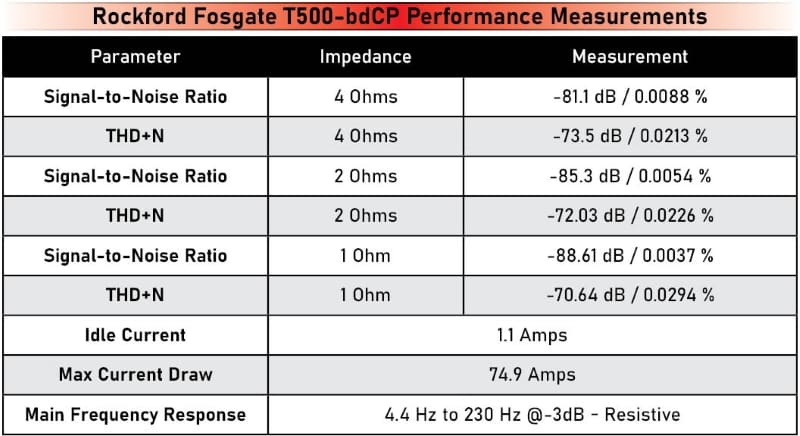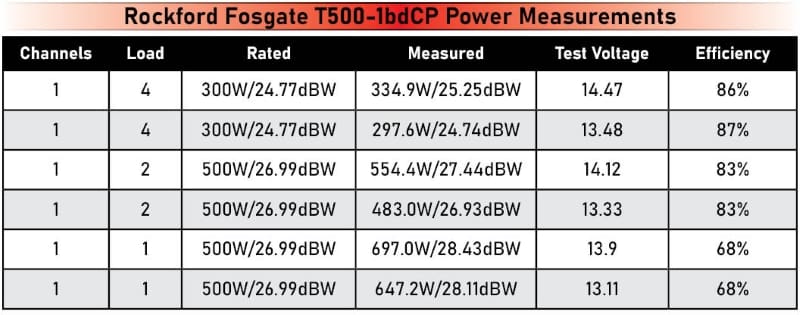In the minds of most car audio enthusiasts, the only thing that matters when it comes to subwoofer amplifiers is how much power they make. Subwoofer amplifier quality is essential for those who want the bass frequencies in their audio systems to sound accurate and musical. Our friends at Rockford Fosgate in Tempe, Arizona, sent up one of their T500-1bdCP 500-watt monoblock amps for a full Test Drive Review. Let’s check it out!
Features of the Rockford Fosgate T500-1bdCP Subwoofer Amplifier
The T500-1bdCP is part of the Power Series, the highest-performance car audio products from Rockford Fosgate. The Power Series has five subwoofer amplifiers, with this model being the smallest in the full-size line. They rate the amp as capable of producing 300 watts into a 4-ohm load and 500 watts into 2- or 1-ohm loads. The frequency response specification is a tolerance of 0.5 dB from 20 Hz to 250 Hz, and efficiency varies from 86.2% to 73.4%, depending on the load.
As is typical with all full-size Rockford Fosgate amplifiers, the T500-1bdCP features a heavy cast-aluminum heatsink. While more costly to manufacture, these cast heatsinks provide more surface area for cooling than extruded designs, so these amplifiers will play longer without overheating. Thermal stability is crucial to Rockford Fosgate’s dedication to delivering reliable, high-performance products. Four mounting holes are cast into the corners of the heatsink that your installer can use to secure the amp.
All controls, along with the power, signal and speaker connections, are along the front edge of the amp. On that far right is a set of terminal blocks that will accept 4 AWG power, ground cables, and the remote turn-on connection. Holes in the top panel allow your installer to secure everything with a No. 2 Phillips screwdriver. Next along the panel are two pairs of RCA jacks. The lower pair is the input to the amp, and the upper pair is the pass-through connection to send the signal to another subwoofer amplifier. The RCA inputs feature fully balanced differential circuitry to help prevent ground loops and noise typical of lesser designs.
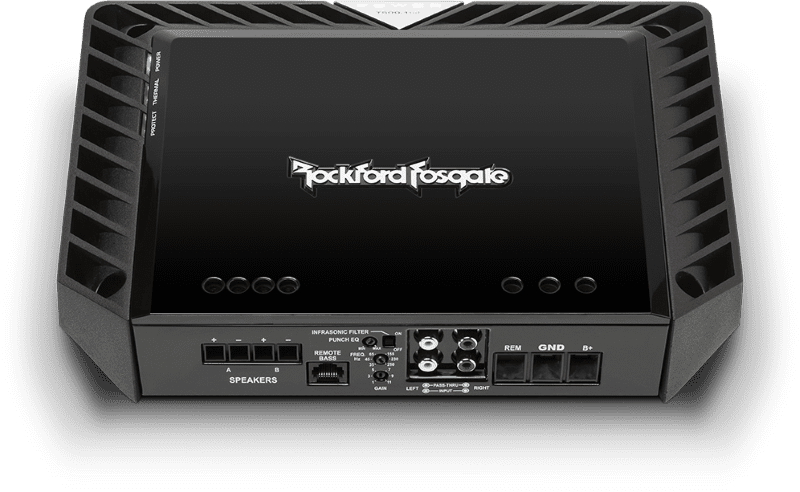
The amplifier adjustments are in the center of the end panel. At the bottom is the sensitivity control labeled 0 to 11. The T500-1bdCP will accept signals from 150 mV to 4 volts to produce full power. Above the sensitivity control is the adjustable low-pass crossover. The crossover is adjustable from 35 to 250 Hz and features a -24 dB/octave filter. A switch enables the infrasonic filter, which attenuates low-frequency information below 28 Hz with a -12 dB/octave filter. Finally, we have the Punch Bass Boost control. The Punch Boost circuit allows your installer to dial in up to 18 dB of gain at 45 hertz with a narrow-Q filter.
An RJ-45 jack on the chassis works with a standard Ethernet cable and the optional Remote Punch EQ (PEQ) to control the Punch EQ circuit remotely. When connected, the PEQ overrides the adjustment on the amp chassis.
Lastly, we have connections for the subwoofers with two positive and two negative terminals. The terminal block will accept up to 8 AWG wires to connect to your subwoofers.
Up in the top-left corner of the amp cover are three LEDs. One illuminates when the amplifier is on. A second illuminates if the amp overheats. The third lights up if the amplifier has gone into protection as a result of a short circuit.
Rockford Fosgate Constant Power
If you’ve looked at the model number of this amplifier, then you’ll see it ends with the letters CP. This acronym refers to Rockford Fosgate’s patented Constant Power design. Historically, amplifiers made more power into lower impedances. For example, an amp might make 500 watts into a 1-ohm load, 300 watts into a 2-ohm load and 175 watts into a 4-ohm load. The product specialist you were working with had to ensure that you had a combination of subwoofers that would present a 1-ohm load so you’d get the most power possible.
The Constant Power design simplifies matching subwoofers to amplifiers by allowing the amplifier to make full power into 2- and 1-ohm loads. In the case of the T500-1bdCP, that’s 500 watts. The final load impedance is a bit less crucial, and you’ll know you’re getting the most out of the amp. With that said, the folks at Rockford Fosgate are known to overdeliver, so we’ll see how the amp performs on the test bench.
Another feature described by the bd letters in the name highlights the output device topology. This proprietary Class BD amplifier uses dedicated devices for the positive and negative halves of the waveform. This design delivers maximum efficiency, so the amp draws less current from your electrical system.

T500-1bdCP Internal Inspection
Removing the bottom panel of the T500-1bdCP reveals a high-quality and typical Rockford Fosgate design. The heatsink around the circuit board is angled at 45 degrees to give the chassis additional mass. The output and switching devices clamp to the board with Rockford Fosgate’s MEHSA3 design. MEHSA3 uses a ceramic substrate and aluminum layer to increase heat transfer efficiency.
Four 300-microfarad, 63-volt capacitors filter the power from the input terminals. After leaving the switching devices, current passes through a large toroidal transformer to a pair of 3,300-microfarad, 63-volt caps and two smaller caps whose values are concealed by the adhesive that prevents vibration.
In the center of the amp are five daughter boards that stand vertically. Two boards are home to the sensitivity, crossover, Punch EQ and infrasonic filter. The board closest to the transformer likely contains the PWM control circuitry, and the two boards closest to the output filters are probably the amplifier controller circuitry.
A large-gauge inductor and a foil-style capacitor filter the output to the speakers. Two ultra-low-impedance resistors integrated into the output path are part of the Constant Power monitoring circuitry. Of note, there are two temperature sensors, one on the power supply devices and one on the output devices to monitor amp operation. As always, everything is tidy, and heavy devices are attached to the board with adhesive to prevent damage from vibrations. The toroidal transformer is wrapped in what’s likely a flexible RF shield to help keep electrical noise at bay. The underside of the top cover is also metal, furthering the RF protection capabilities of the amp.
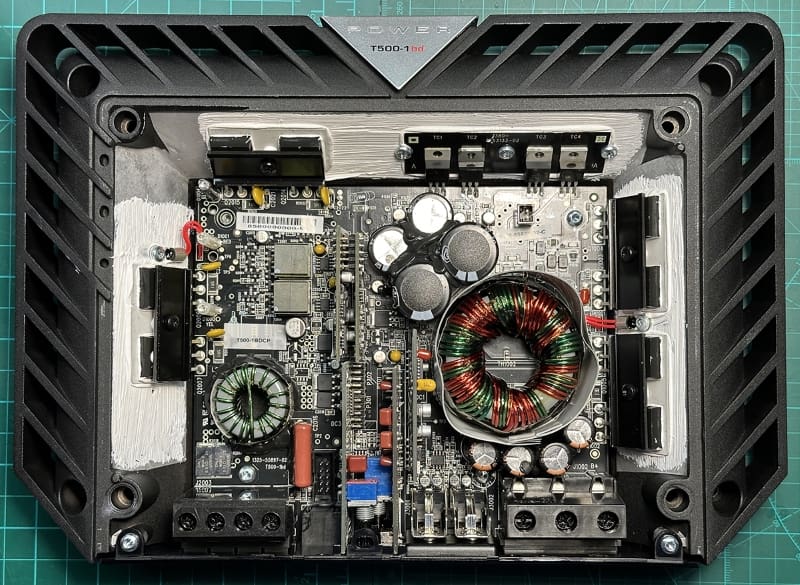
Auditioning the Rockford Fosgate T500-1bdCP
I set the T500-1bdCP up in my reference system. It’s powering an audiophile-grade 12-inch subwoofer in a sealed enclosure. The rest of the system includes a set of bookshelf speakers powered by a high-bias Class AB car audio amplifier, and I’m using an upgraded Clarion DRZ-9255 CD player as the source. As always, I calibrate the output of the subwoofer system to match my target response curve in the room. This process ensures that I’m listening to what the amplifier contributes, not differences in the system configuration.
Let’s start with an excellent low-frequency challenge. In the old days of print magazines, one of the reviewers used to listen to “One” by Metallica. This seems like as good a track as any to start with. The goal here is for the impacts on the kick drum to remain clear and defined and not blur together. To put it mildly, the amp and sub didn’t care how fast Lars played, and it had no problem defining each impact with excellent distinctness.
OK, how about something electronic? I fired up “Eat It Raw” by Infected Mushroom and increased the volume. Once again, the bass was effortless, and the low-frequency information shook the ceiling tiles and the couch. Even at elevated volume levels, every note was well-defined and crystal clear.
Nothing is fazing the T500-1bdCP so far. Let’s see how it can handle the upright bass from “I Can See Clearly Now” by the Holly Cole Trio. Any frequency emphasis or resonance can wreak havoc with this track. I bet you aren’t surprised that the bass sounded great with impressive realism. Yeah, I wasn’t surprised either.
I finished the formal listening with “Let Go” by Deadmau5. Joel lives about 20 kilometers north of our lab, and we’ve seen him out and about getting Tim Horton’s coffee in his McLaren P1. Once again, the best word to describe how the amp handled this track is effortless. This track has no infrasonic information but drops to nearly 30 hertz at several points. The T500-1bdCP doesn’t care what you feed it; it sounds great with everything I threw at it. “Torus” by Sub Focus, “Rhythm is a Dancer” by Snap and “Vicious Delicious” by Infected Mushroom kept playing as I made my notes, and all sounded clear and detailed.
Bench Testing the Power Series T500-1bdCP
With the listening done, we headed next door to the lab to get the amp on the bench. The first order of business was a series of distortion measurements. The T500-1bdCP delivered solid numbers that didn’t vary much based on load, ranging from 0.0213% THD+N at 4 ohms down to 0.0294% at 1 ohm. All measurements are compliant with the industry standard 1-watt output level in each respective impedance. Noise remained in check, with the amp bettering -81.1 dB at all impedances.
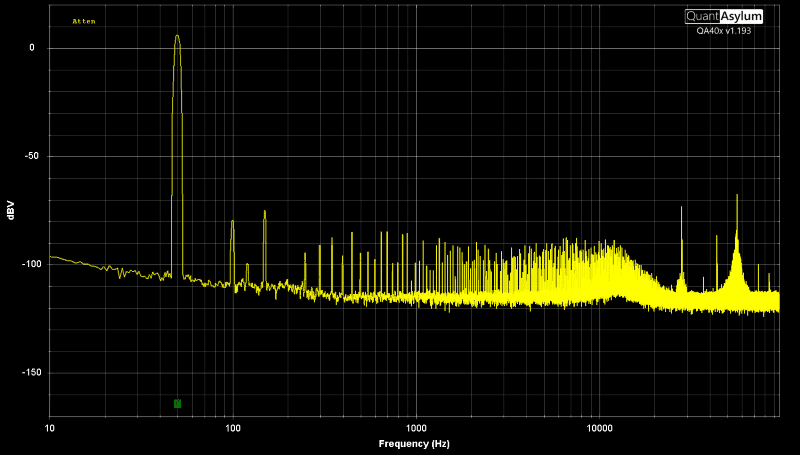
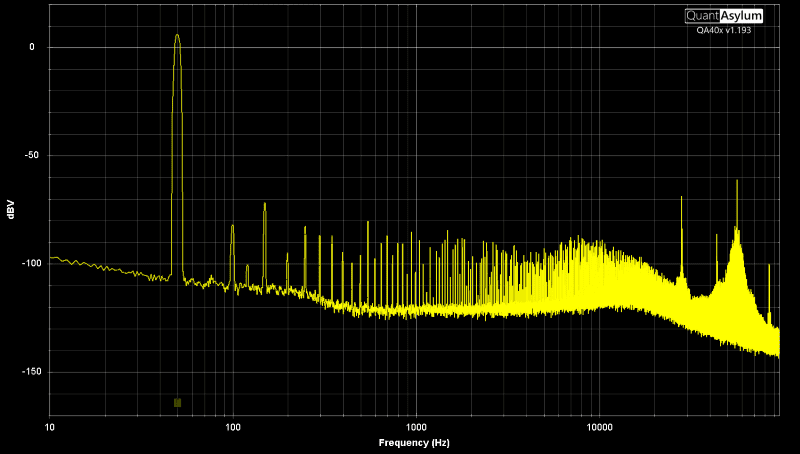
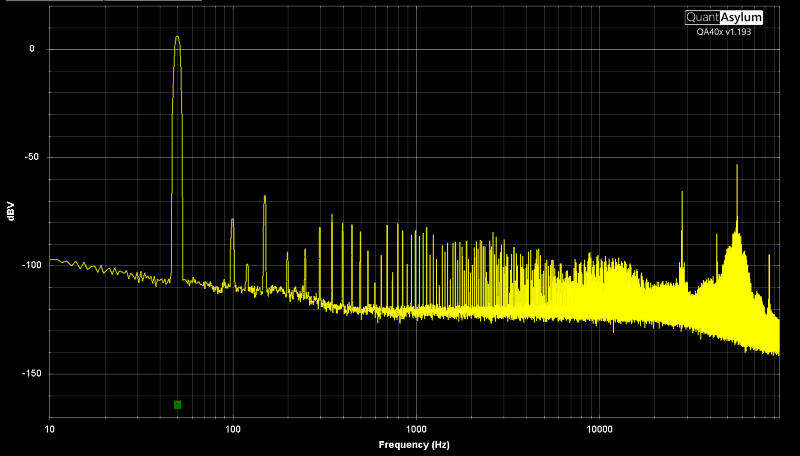
Next, it was time for frequency response measurements. The amp delivered -3 dB frequencies of 4.4 hertz on the bottom and 230 hertz on top. The output level didn’t decrease as much as other amplifiers, showing good output impedance numbers. A bit more upper bandwidth might help with matching the phase between midbass drivers and sub easily, but that’s being pretty picky. I also checked the crossover, Punch EQ and infrasonic filter functions. Everything functioned exactly as expected.

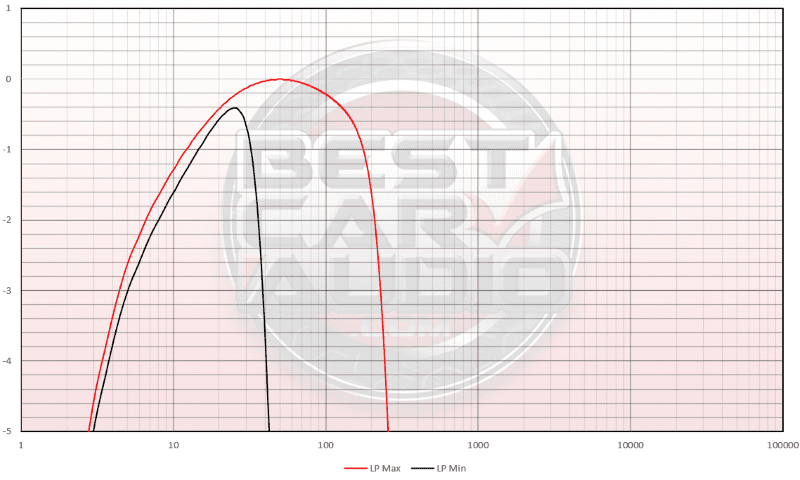
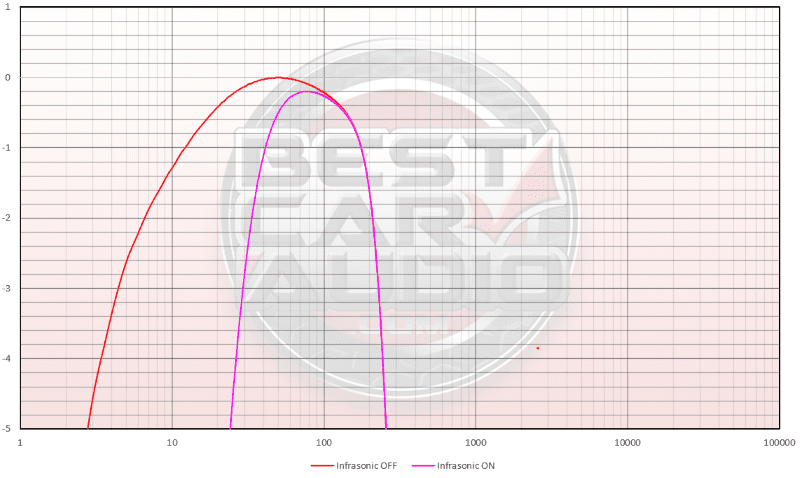
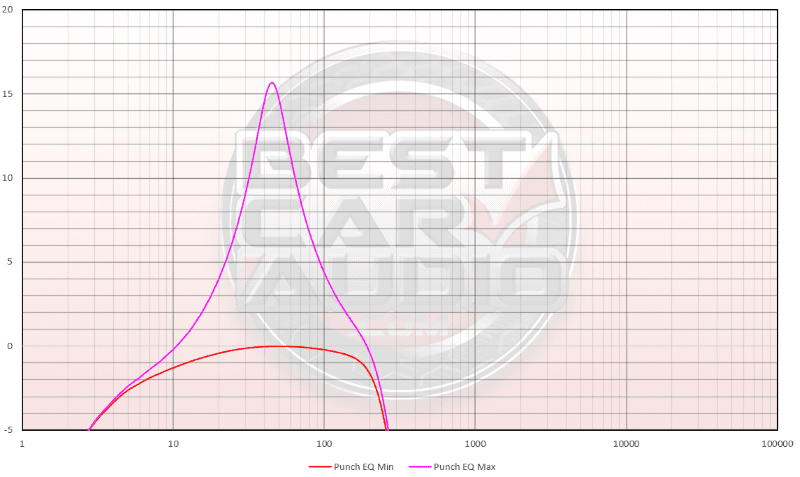
Satisfied with the measurements, it was time to test the amplifier for power production. While we usually don’t emphasize this test in quantifying an amplifier’s quality, power does matter when it comes to driving subwoofers. The T500-1bdCP exceeded all its power ratings by more than 10% at 4- and 2-ohm loads. Where things got silly in a good way was the 1-ohm measurements. The amp produced 697 watts with 13.9 volts at the power terminals and 647.2 watts down at 13.11 volts. That’s 139% and 129% over its rated power. If the electrical system in your car or truck can deliver more voltage, the measurements would be even higher. Ah, the legacy of overdelivering continues in earnest.
The final test was to see how long the amp would play while delivering full power into a 2-ohm load. So far, Rockford Fosgate amplifiers have set the benchmark for playtime, with many exceeding 30 minutes. To put that in perspective, I’ve measured several “internet brand” European and Brazilian amplifiers that shut down in well under three minutes. In the case of the T500-1bdCP, I played the amp at 1% to 2% THD+N into the aforementioned 2-ohm load and took temperature measurements of the heatsink on the output side.
Editor’s Note: We have added new power supplies to the lab and have retested the T500-1bdCP. Check out the results HERE!
If you ever want to do something boring, do this test. Frankly, I gave up after 60 minutes. The heatsink was over 180 degrees F, but it kept trucking. If you’ve ever wondered why so many people still have old Rockford Fosgate amplifiers in their systems, the large TO-247-case MOSFETS and MEHSA3 aluminum plate under them work with the massive cast heatsink to keep everything cool. I took thermal images of the devices as the amp played, and they stayed the same temperature as the heatsink the entire time. To say I’m in utter awe would be the understatement of the century.
Conclusions on the Rockford Fosgate T500-1bdCP Mono Car Audio Amplifier
There’s no denying that there are many less expensive amplifiers on the market that can produce about 500 watts into a 2-ohm load or almost 700 watts into a 1-ohm load. There may be a few that can do it with the same efficiency. Even fewer can do it with the same sound quality. I’ve never seen an amplifier play for so long without overheating. So finding a true equivalent to this little monster will be very challenging and, I’d say, improbable. Do I have any complaints? None whatsoever. However, Rockford Fosgate has added its C.L.E.A.N. circuitry to all Punch and Prime Series amps. I figure the Power Series is due for that upgrade sometime soon. However, that certainly doesn’t affect the performance of this amazing subwoofer amplifier.
If you care about the accuracy and detail of the bass in your car audio system, visit a local authorized Rockford Fosgate retailer and ask for a demonstration of the Power T500-1bdCP or its 1,000-, 1,500- or 2,500-watt bigger brothers. We know you’ll be impressed. Be sure to follow our friends from Tempe on Facebook, Instagram and YouTube to learn about the newest audio, marine, powersports and motorcycle upgrades they’ve introduced.



